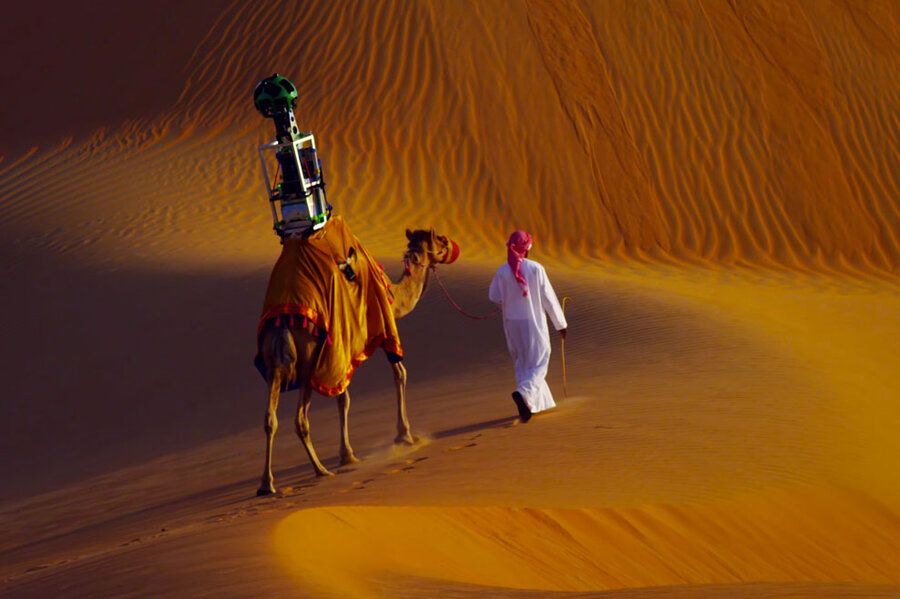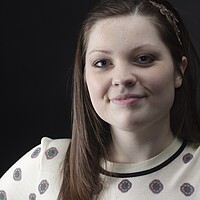Want a job at Google? Be a camel.
What does the Google Maps team do when its Street View Car can’t traverse the humongous sand dunes of the Liwa Desert, UAE? They get a female camel named Raffia to do it instead.
Raffia, the first animal to carry Google’s Trekker camera, captured 360-degree ‘street’ views of Liwa with the equipment fastened securely atop her single hump. Liwa, an oasis area known for its date farms, sits about 100 miles southwest of Abu Dhabi and just north of the Rub' al Khali Desert, the largest sand desert in the world.
"This allowed us to gather authentic images for the collection as well as minimize our disruption of this fragile environment," a Google spokesperson told the Monitor in an email.
Dromedary or Arabian camels, the one-hump kind, have evolved all sorts of remarkable features to survive in their environment, making Raffia the perfect ungulate to take on the job of wandering around in extremely hot temperatures with a camera on her back.
Camels can store up to 80 pounds of fat in that single hump, and, when nourishment is not otherwise available, their bodies can break that fat down into water and energy. The hump comes in handy in another way too: by keeping the fat stored there as opposed to throughout the rest of the body, the camel doesn't overheat from insulation.
Raffia and her relatives can go as far as a hundred miles in the desert without a drink of water. The unique oval shape of the camel's red blood cells means the camel's blood can keep pumping even when it thickens from dehydration.
In temperatures sometimes reaching 120 degrees Fahrenheit, camels rarely sweat. They can withstand losing a quarter of their body weight through sweating, while many other mammals can only withstand losing half of that proportion.
With a desert for a home, the Arabian camel has to look out for sand entering their bodies. Their bushy eyebrows and multiple rows of lengthy eyelashes shelter their eyes and they can even close their nostrils. And when they exhale, water vapor gets trapped in those barricaded nostrils and is reabsorbed, to conserve water.
Camels are designed for their habitat right down to their two-toed feet. Their soft, thick footpads help them to tolerate all that walking, and provide the mammals stability when trekking across shifting desert sands.
Regarded as ships of the desert, camels can carry between 400 and 600 pounds for up to 25 miles a day and nomads have used the pack animals in caravans for several thousand years. So the Google Trekker backpack, which weighs in at 42 pounds, is practically insubstantial to a camel.
But Raffia didn’t make the journey for Google entirely on her own. The young camel did have a human guide for her journey through Liwa, as can be spotted in the images captured by the Trekker.







